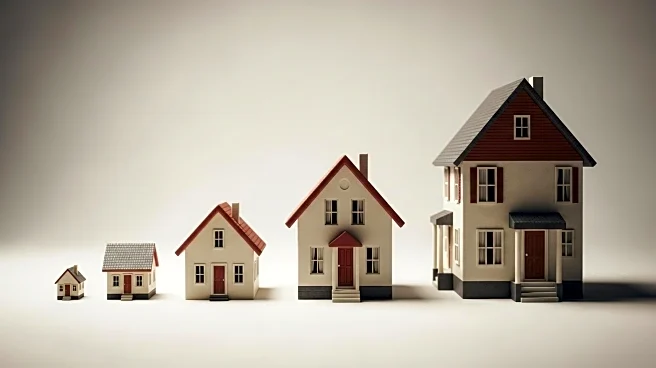What's Happening?
Newly built homes in the United States have decreased in size, reaching their smallest average in two decades. This trend is driven by higher mortgage rates and reduced affordability, according to recent analyses. The average new single-family home sold in 2024 measured 2,404 square feet, a decrease of approximately 11% from a decade ago. The median sales price of a new home was $403,800 in July, while 30-year mortgage rates have risen from near 2.65% in early 2021 to the mid-6% range, impacting household purchasing power. Realtor.com reports that only 28% of homes on the market in August were affordable to households earning the U.S. median income, down from 30% earlier this year.
Why It's Important?
The shrinking size of homes and rising mortgage rates are significant as they reflect broader economic challenges facing American households. Higher interest rates have eroded purchasing power, forcing many buyers to adjust their expectations, such as opting for smaller homes or delaying homeownership. This trend impacts the housing market, with homebuying activity slumping to its lowest level since 1995. Builders are responding by offering smaller, budget-friendly homes, but the market remains strained by high prices and borrowing costs. The situation affects housing-linked investors who are closely monitoring builders and suppliers for signals on demand and margins.
What's Next?
Economists suggest that relief may come if mortgage rates ease, although any improvement is expected to be gradual. The housing market's outlook hinges on future interest rate movements, which will influence affordability and homebuying activity. Stakeholders, including builders and investors, will continue to watch for changes in demand and pricing strategies as they navigate the current economic environment.













